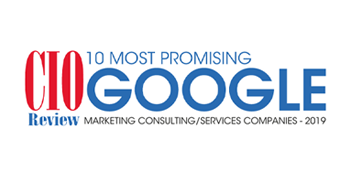6 Shopify Website Design Tips to Create a Beautiful Site

Introduction
Creating a visually appealing and effective Shopify website is crucial for capturing the attention of visitors and converting them into loyal customers. A well-designed site not only enhances the user experience but also reflects your brand’s professionalism and values. This article provides six essential tips to help you design a beautiful and functional Shopify store.
You’ll learn how to:
- Choose the right theme that aligns with your business values and target audience.
- Use apps to enhance your site’s functionality.
- Create a compelling visual experience, incorporating elements like high-quality images, videos, and video marketing strategies.
- Leverage social media integration for wider reach and engagement.
- Streamline the email sign-up process for lead generation using best practices like implementing a user-friendly website questionnaire.
By following these guidelines, you’ll be well-equipped to develop an engaging and effective Shopify website.
1. Choose the Right Theme for Your Business
The choice of a Shopify theme significantly impacts the overall look and feel of your e-commerce site, influencing both aesthetics and user experience. The right theme can make your store visually appealing, easy to navigate, and more likely to convert visitors into customers.
1.1 Aligning with Business Values and Target Audience
Selecting a theme that aligns with your business values and target audience ensures that your website resonates with potential customers. For instance:
- A minimalist theme might be perfect for a high-end fashion store.
- A vibrant, colorful theme could suit a children’s toy shop.
Understanding your brand identity and customer expectations helps in choosing a theme that enhances user engagement.
1.2 Key Considerations When Choosing a Shopify Theme
When picking a Shopify theme, consider the following factors:
- Responsiveness: Ensure the theme is mobile-friendly, as a significant portion of online shopping happens on mobile devices.
- Customization Options: Look for themes that offer flexibility in design elements, allowing you to tailor your site to match your brand.
- Performance: Themes should load quickly and perform smoothly to provide an optimal user experience.
- Support and Updates: Opt for themes from reputable developers who offer regular updates and reliable support.
1.3 Popular Shopify Themes Across Different Industries
Here are some popular Shopify themes that cater to various industries:
- Fashion & Apparel: Narrative – great for storytelling with its visually engaging layout.
- Electronics & Gadgets: Venture – ideal for larger product catalogs, featuring a robust design.
- Home & Garden: Supply – perfect for stores with medium to large inventories, offering extensive filtering options.
Choosing a well-suited theme sets the foundation for a successful Shopify store. By focusing on responsiveness, customization options, performance, and support, you can ensure an enhanced user experience.
Additionally, incorporating strategies like operational agility can further boost your e-commerce venture. Operational agility ensures that your business can adapt quickly to changing market conditions and customer demands. This flexibility is crucial in staying ahead of the competition and meeting evolving consumer needs.
Don’t just take our word for it. Hear what other successful entrepreneurs have to say about their experiences with Shopify themes. The insights from experienced individuals can provide valuable guidance in choosing the right theme for your business.
So remember, selecting the right Shopify theme aligned with your business values and target audience, while leveraging operational agility strategies, will set your e-commerce venture up for success.
2. Use Apps to Enhance Your Site’s Functionality
Leveraging Shopify apps can transform your e-commerce site into a more dynamic and feature-rich platform. By incorporating the right apps, you can significantly enhance both the design and functionality of your website.
Benefits of Leveraging Apps
Using apps allows you to:
- Add advanced functionalities without complex coding.
- Improve user experience through seamless integrations.
- Tailor your store’s features to better match your business needs.
Recommended Apps for Enhancing Design and Functionality
- PageFly
Key Features:
- Drag-and-drop builder for custom pages.
- Pre-designed templates for various industries.
- Mobile responsiveness.
PageFly is ideal for creating custom landing pages, product pages, and blog posts, offering flexibility in design while ensuring a consistent look across devices.
- Yotpo
Key Features:
- Customer reviews and ratings.
- Photo reviews and Q&A sections.
- Social proof widgets.
Yotpo helps build trust with potential customers by showcasing authentic reviews, enhancing your site’s credibility, and encouraging conversions.
- Klaviyo
Key Features:
- Advanced email marketing automation.
- Segmentation based on customer behavior.
- Pre-built email templates.
Klaviyo integrates seamlessly with Shopify, allowing you to create targeted email campaigns that drive engagement and sales.
Integrating Apps Effectively
To maintain a seamless user experience while integrating apps:
- Evaluate App Necessity: Only integrate apps that add real value to your site. Overloading your store with unnecessary apps can slow down performance.
- Check Compatibility: Ensure the app is compatible with your chosen Shopify theme to avoid any design conflicts.
- Monitor Performance: Regularly check how each app affects site load time and overall performance.
Enhancing your Shopify site with carefully selected apps not only improves functionality but also enriches customer interactions, driving higher engagement and satisfaction.
3. Optimize for Improved Site Load Time
Site load time optimization is essential for reducing bounce rates and improving conversions on your Shopify store. When your site loads quickly, users are more likely to stay and explore your products, leading to higher engagement and sales.
Tips and Techniques to Improve Speed and Performance
- Optimize Image Sizes
- High-resolution images can significantly slow down your site. Use tools like TinyPNG or ImageOptim to compress images without compromising quality.
- Choose the appropriate file format (JPEG for photos, PNG for graphics with transparent backgrounds).
- Leverage Caching Mechanisms
- Caching temporarily stores web documents to reduce server lag. Utilize Shopify’s built-in caching or explore third-party caching apps available in the Shopify App Store.
- Minimize HTTP Requests
- Each element on a webpage (images, scripts, CSS files) requires an HTTP request. Reduce these requests by combining files where possible.
- Remove unnecessary plugins and scripts that may be adding extra load time.
- Use a Content Delivery Network (CDN)
- CDNs distribute your content across multiple servers worldwide, allowing faster access from various locations.
- Shopify integrates with CDNs like Cloudflare to improve loading times globally.
- Enable Lazy Loading
- Lazy loading defers the loading of non-critical resources (like images below the fold) until they are needed.
- This technique ensures that essential content loads first, improving perceived load times.
- Minify CSS and JavaScript Files
- Minification removes unnecessary characters from code without altering functionality, resulting in smaller file sizes.
- Tools like UglifyJS for JavaScript and CSSNano for CSS can help automate this process.
- Monitor Site Performance Regularly
- Use tools like Google PageSpeed Insights or GTmetrix to analyze your site’s performance and identify areas for improvement.
- Regular monitoring helps you stay on top of any issues that may affect load times.
By implementing these strategies, you ensure a seamless user experience, encouraging visitors to stay longer and engage more deeply with your Shopify store.

4. Create a Compelling Visual Experience
Visuals are essential for creating an immersive and attractive e-commerce site. They can grab attention, showcase products effectively, and drive conversions. For a Shopify store, using high-quality visuals is crucial to stand out in a competitive market.
Best Practices for Using High-Quality Images and Videos
To make visuals impactful on your Shopify website:
- Use High-Quality Images: Make sure all product images are sharp and clear. High-quality images build trust by showing the quality and details of your products.
- Include Videos: Videos offer a dynamic way to present products. Think about adding video demos, customer reviews, or behind-the-scenes clips to give customers a better understanding of what you offer.
- Maintain a Consistent Style: Have a cohesive visual style across your site. This means using the same lighting, background, and editing techniques for all product photos.
- Show Different Views: Provide multiple angles of each product. Displaying various perspectives helps customers visualize the features and size of the product.
- Enable Zoom: Allow customers to zoom in on product images for a closer look at the finer details.
Aligning Visual Content with Your Chosen Theme
Consistency is important when aligning your visual content with your chosen Shopify theme:
- Match Colors: Coordinate the colors of your images and videos with the overall color scheme of your theme. This creates a unified look that enhances the visual appeal of your site.
- Use Complementary Fonts: Select fonts that go well with the style of your visuals. If your theme uses modern and clean fonts, ensure any text overlays on images or videos follow this style.
- Place Visuals Thoughtfully: Position images and videos in areas where they naturally fit within the layout of your theme. Avoid cluttered pages by spacing out visual elements appropriately.
A well-designed Shopify store with compelling visuals not only attracts visitors but also converts them into loyal customers. By following these best practices and ensuring alignment with your chosen theme, you create a seamless and engaging user experience.
For a more comprehensive and successful digital strategy, consider consulting with Web Conductors. Their expertise in digital media planning can enhance your current efforts and help you achieve your business goals effectively. If you’re specifically looking to boost your Shopify store’s performance, their tailored Shopify marketing strategies can significantly improve your results.
5. Leverage Social Media Integration for Wider Reach
Integrating social media into your Shopify website design can significantly amplify your store’s reach and visibility. Social media integration allows you to tap into a broader audience and create more engagement opportunities.
5.1 Strategies for Leveraging Different Social Media Channels
Different social media platforms offer unique ways to promote your products and engage with customers:
- Instagram: Utilize Instagram Shopping to tag products directly in your posts, allowing users to purchase without leaving the app.
- Facebook: Create a Facebook Shop to display your products on your business page, making it easy for followers to browse and buy.
- Pinterest: Pin high-quality images of your products with direct links to purchase pages, driving traffic back to your Shopify store.
- X: Use X cards to showcase product images and descriptions, encouraging clicks through to your site.
Engaging content, such as behind-the-scenes looks, user-generated content, and interactive polls or stories, can also drive engagement across these platforms.
5.2 Recommended Social Media Buttons and Widgets
To make the most of social media integration, consider adding the following buttons and widgets:
- Share Buttons: Place share buttons on product pages, blog posts, and other key areas of your site. Popular options include AddThis and ShareThis.
- Follow Buttons: Encourage visitors to follow your social media profiles by placing follow buttons in prominent locations like the header or footer.
- Social Feeds: Display live feeds from your social media accounts using widgets like Smash Balloon or Juicer. This keeps your website content fresh and engaging.
- Review Widgets: Showcase customer reviews from platforms like Facebook or Google My Business using widgets such as Trustpilot or Yotpo.
6. Streamline the Email Sign-Up Process for Lead Generation
Capturing leads is crucial for the growth and success of your Shopify store. An optimized email sign-up process helps you build a valuable email list, allowing you to engage with potential customers directly. By effectively designing this process, you can convert visitors into loyal customers and boost your sales.
Tips for Designing an Attention-Grabbing Email Sign-Up Bar
Creating an attractive and persuasive email sign-up bar is key to capturing leads. Here are some tips:
- Use Clear and Compelling Copy: Your CTA button should be enticing. Phrases like “Join Our Newsletter,” “Get Exclusive Offers,” or “Subscribe Now” work well.
- Keep It Short and Sweet: Avoid lengthy forms. A simple first name and email address field often suffice.
- Highlight Benefits: Emphasize what subscribers will gain, such as discounts, updates, or exclusive content.
- A/B Testing: Experiment with different designs, placements, and copies to find what works best.
Best Practices to Make the Email Subscription Flow Smooth and Frictionless
To ensure a smooth experience for users:
- Minimize Steps: Reduce the number of steps required to subscribe. The fewer clicks, the better.
- Mobile Optimization: Ensure your sign-up process is mobile-friendly. A significant portion of your audience will access your site via mobile devices.
- Privacy Assurance: Clearly state how subscriber data will be used (Our Privacy Policy can help with this).
- Confirmation Emails: Send a double opt-in confirmation email to verify the subscription and provide a welcome message.
By implementing these strategies, you create a seamless user experience that encourages more sign-ups, ultimately leading to effective lead generation.
This section on optimizing your email sign-up process provides actionable insights that can significantly enhance your website design and lead-generation efforts. If you’re interested in taking your e-commerce store to the next level, consider exploring topics like SEO and leveraging player embeds for enhanced user engagement.”.
Conclusion
Creating a beautiful and successful Shopify store depends on several key factors. Here are the main things to remember from the tips shared:
- Choose the Right Theme for Your Business: Selecting a theme that aligns with your business values and target audience is crucial. Make sure it works well on different devices and allows you to customize it easily.
- Use Apps to Enhance Your Site’s Functionality: Using apps can greatly improve how your site looks and works, giving it more features.
- Optimize for Faster Site Loading: A site that loads quickly keeps visitors from leaving and helps increase sales. It’s important to resize images and use caching methods to speed up your site.
- Create an Engaging Visual Experience: Using high-quality images and videos can make your site more immersive. It’s also important to keep your visual content consistent with the theme you’ve chosen.
- Integrate Social Media for More Exposure: Connecting your site with social media platforms can help you reach a wider audience and interact with customers better.
- Make Email Sign-Up Easy for Generating Leads: Having a simple and optimized process for people to sign up for your emails can help you capture potential customers’ information effectively.
By following these Shopify website design tips, you’ll be able to create an online store that not only looks great but also works smoothly, ensuring your success in the e-commerce world.
Investing time in these areas will undoubtedly pay off, helping you create a stunning Shopify store that resonates with your audience and drives business growth.
Additionally, if you’re interested in exploring further topics related to e-commerce and digital transformation, this resource on our website can provide you with valuable information.
















